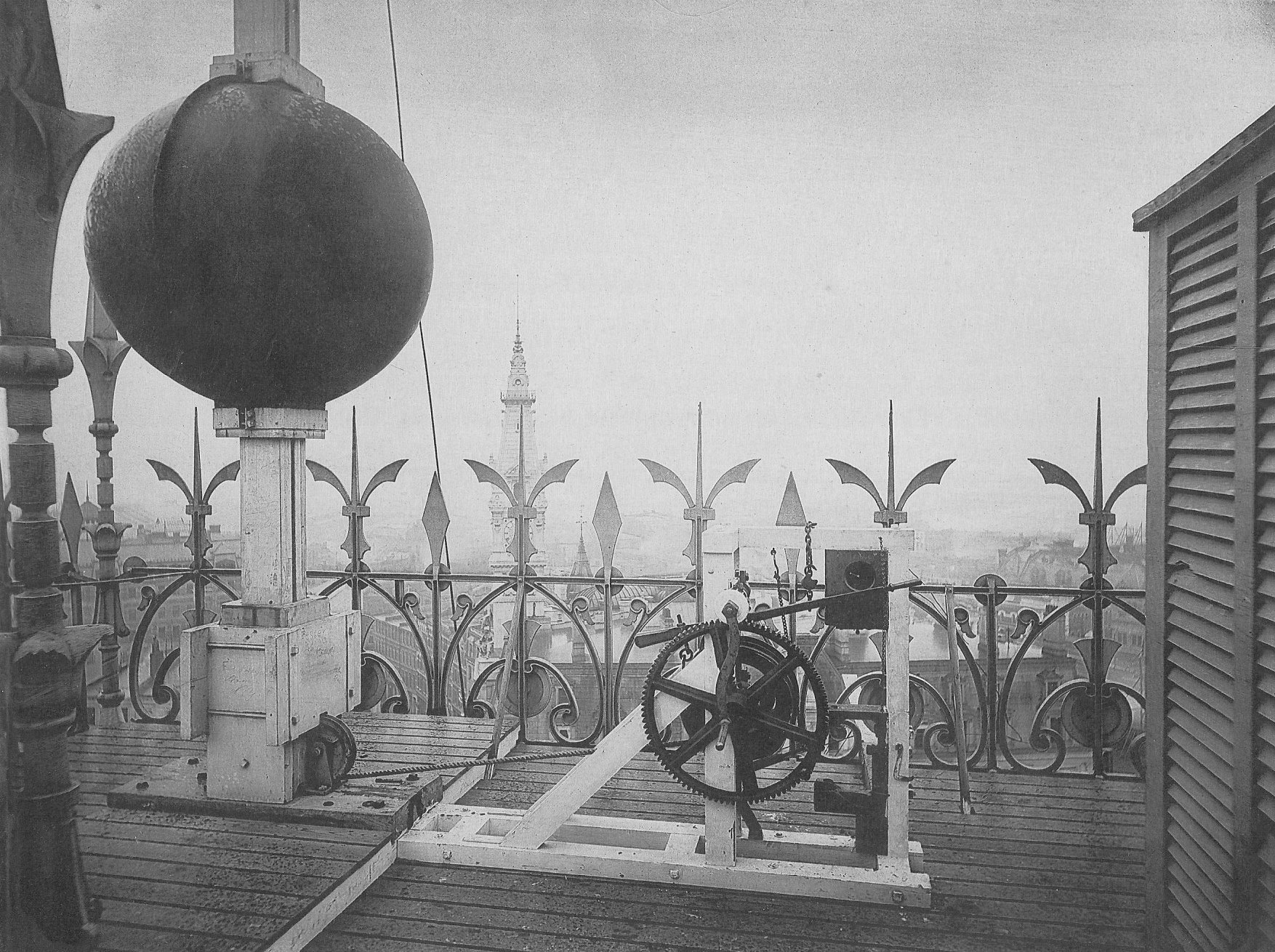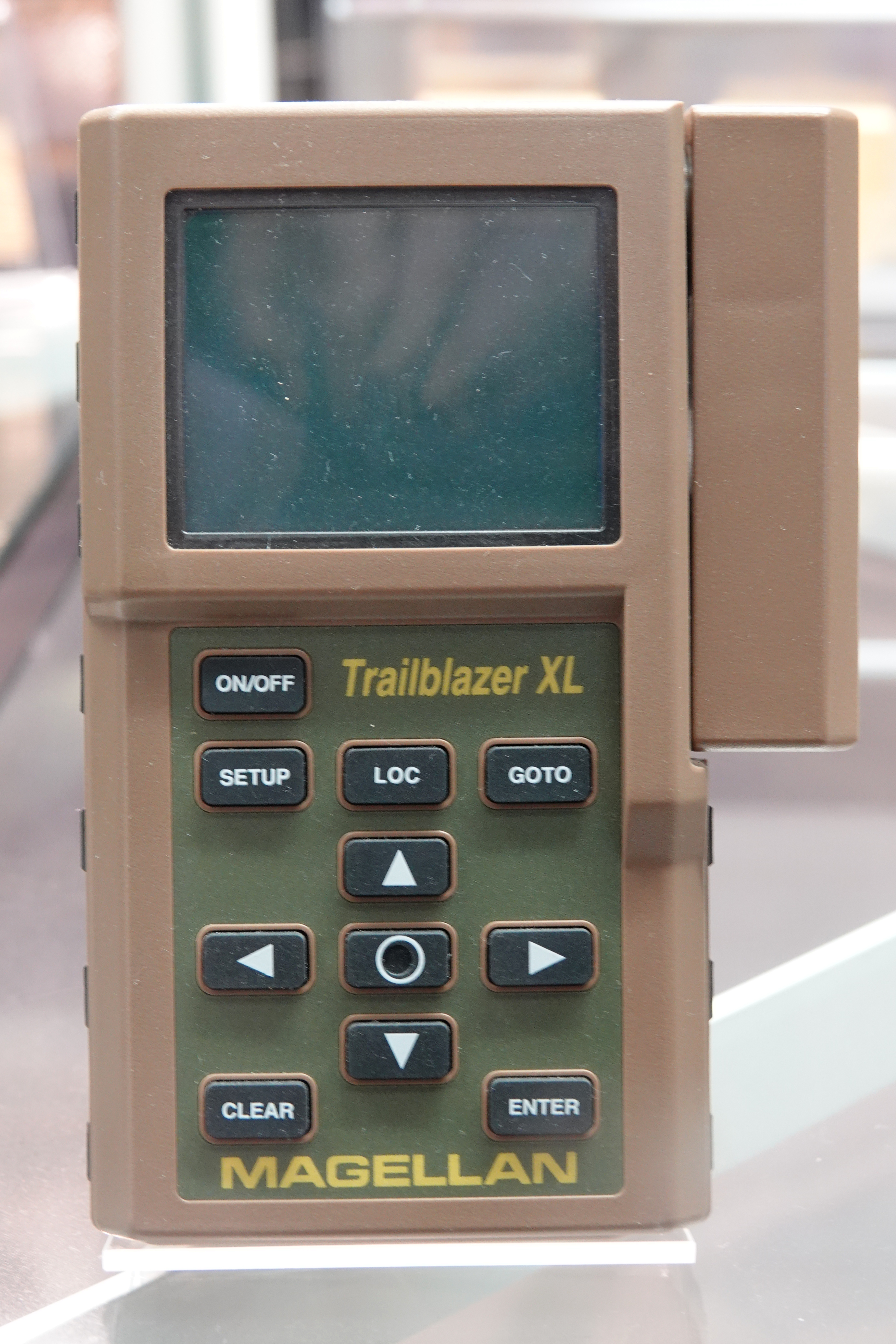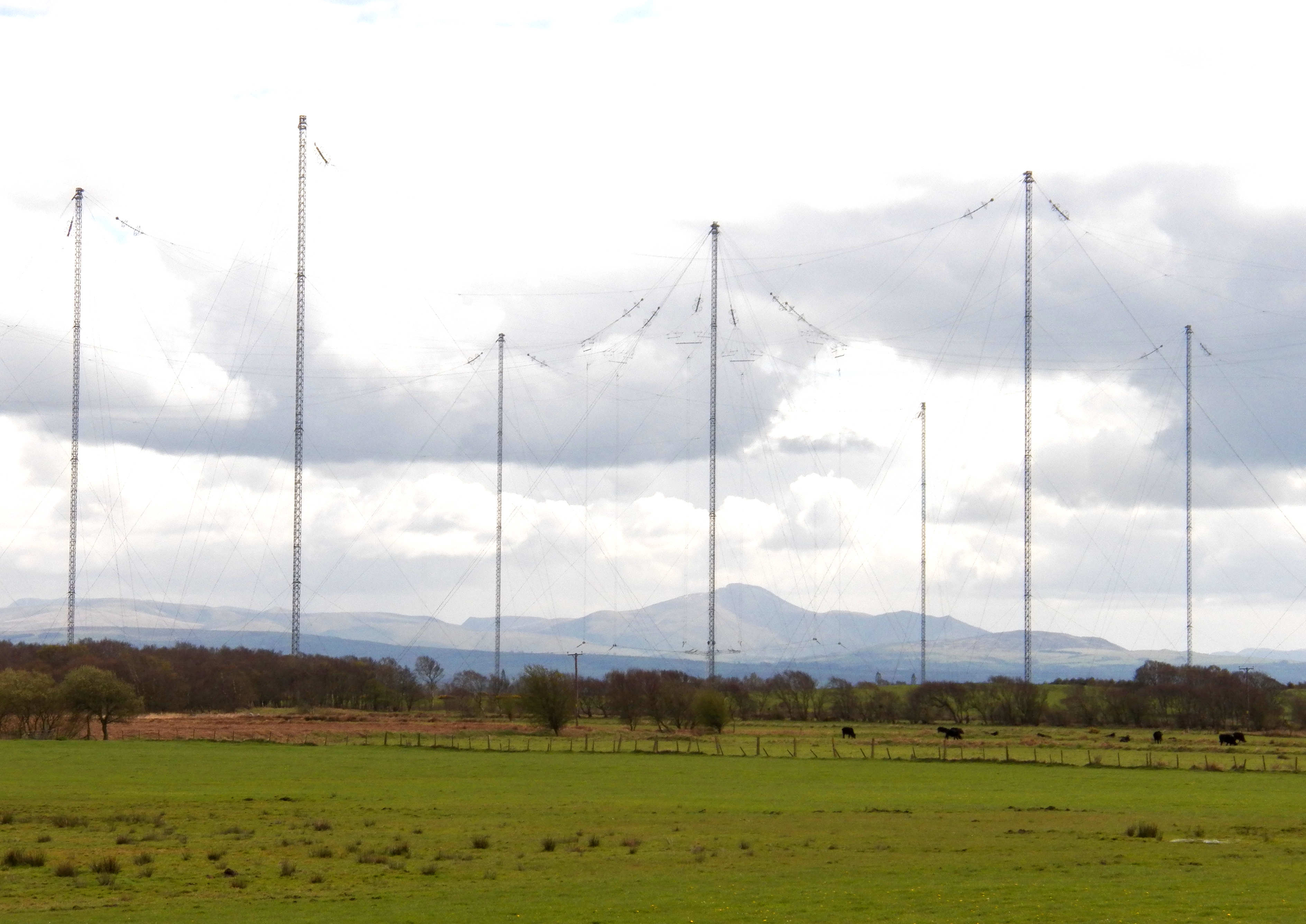|
Time And Frequency Transfer
Time and frequency transfer is a scheme where multiple sites share a precise reference time or frequency. The technique is commonly used for creating and distributing standard time scales such as International Atomic Time (TAI). Time transfer solves problems such as astronomical observatories correlating observed flashes or other phenomena with each other, as well as cell phone towers coordinating handoffs as a phone moves from one cell to another. Multiple techniques have been developed, often transferring reference clock synchronization from one point to another, often over long distances. Accuracy approaching one nanosecond worldwide is economically practical for many applications. Radio-based navigation systems are frequently used as time transfer systems. In some cases, multiple measurements are made over a period of time, and exact time synchronization is determined retrospectively. In particular, time synchronization has been accomplished by using pairs of radio tel ... [...More Info...] [...Related Items...] OR: [Wikipedia] [Google] [Baidu] [Amazon] |
International Atomic Time
International Atomic Time (abbreviated TAI, from its French name ) is a high-precision atomic coordinate time standard based on the notional passage of proper time on Earth's geoid. TAI is a weighted average of the time kept by over 450 atomic clocks in over 80 national laboratories worldwide. It is a continuous scale of time, without leap seconds, and it is the principal realisation of Terrestrial Time (with a fixed offset of epoch). It is the basis for Coordinated Universal Time (UTC), which is used for civil timekeeping all over the Earth's surface and which has leap seconds. UTC deviates from TAI by a number of whole seconds. , immediately after the most recent leap second was put into effect, UTC has been exactly 37 seconds behind TAI. The 37 seconds result from the initial difference of 10 seconds at the start of 1972, plus 27 leap seconds in UTC since 1972. In 2022, the General Conference on Weights and Measures decided to abandon the leap second by or before 2035, at ... [...More Info...] [...Related Items...] OR: [Wikipedia] [Google] [Baidu] [Amazon] |
Time Ball
A time ball or timeball is a time-signalling device. It consists of a large, painted wooden or metal ball that is dropped at a predetermined time, principally to enable navigators aboard ships offshore to verify the setting of their marine chronometers. Accurate timekeeping is essential to the determination of longitude at sea. Although time balls have since been replaced by electronic time signals, some time balls have remained operational as historical tourist attractions. History The fall of a ball was in antiquity a way to show to people the time. Ancient Greek clocks had this system in the main square of a city, as in the city of Gaza in the post-Alexander era, and as described by Procopius in his book on Edifices. Time ball stations set their clocks according to transit observations of the positions of the sun and stars. Originally they either had to be stationed at the observatory, or had to keep a very accurate clock at the station which was set manually to observatory ... [...More Info...] [...Related Items...] OR: [Wikipedia] [Google] [Baidu] [Amazon] |
Atomic Clock
An atomic clock is a clock that measures time by monitoring the resonant frequency of atoms. It is based on atoms having different energy levels. Electron states in an atom are associated with different energy levels, and in transitions between such states they interact with a very specific frequency of electromagnetic radiation. This phenomenon serves as the basis for the International System of Units' (SI) definition of a second: The second, symbol s, is the SI unit of time. It is defined by taking the fixed numerical value of the caesium frequency, \Delta \nu_\text, the unperturbed ground-state hyperfine transition frequency of the caesium-133 atom, to be when expressed in the unit Hz, which is equal to s−1. This definition is the basis for the system of International Atomic Time (TAI), which is maintained by an ensemble of atomic clocks around the world. The system of Coordinated Universal Time, Coordinated Universal Time (UTC) that is the basis of civil time implements ... [...More Info...] [...Related Items...] OR: [Wikipedia] [Google] [Baidu] [Amazon] |
GNSS Receiver
A satellite navigation (satnav) device or GPS device is a device that uses satellites of the Global Positioning System (GPS) or similar global navigation satellite systems (GNSS). A satnav device can determine the user's geographic coordinates and may display the geographical position on a map and offer routing directions (as in turn-by-turn navigation). , four GNSS systems are operational: the original United States' GPS, the European Union's Galileo, Russia's GLONASS, and China's BeiDou Navigation Satellite System. The Indian Regional Navigation Satellite System (IRNSS) will follow and Japan's Quasi-Zenith Satellite System ( QZSS) scheduled for 2023 will augment the accuracy of a number of GNSS. A satellite navigation device can retrieve location and time information from one or more GNSS systems in all weather conditions, anywhere on or near the Earth's surface. Satnav reception requires an unobstructed line of sight to four or more GNSS satellites, and is subject to poor ... [...More Info...] [...Related Items...] OR: [Wikipedia] [Google] [Baidu] [Amazon] |
Satellite Navigation
A satellite navigation or satnav system is a system that uses satellites to provide autonomous geopositioning. A satellite navigation system with global coverage is termed global navigation satellite system (GNSS). , four global systems are operational: the United States's Global Positioning System (GPS), Russia's Global Navigation Satellite System (GLONASS), China's BeiDou Navigation Satellite System (BDS), and the European Union, European Union's Galileo (satellite navigation), Galileo. Two regional systems are operational: India's Indian Regional Navigation Satellite System, NavIC and Japan's Quasi-Zenith Satellite System, QZSS. ''Satellite-based augmentation systems'' (SBAS), designed to enhance the accuracy of GNSS, include Japan's Quasi-Zenith Satellite System (QZSS), India's GAGAN and the European EGNOS, all of them based on GPS. Previous iterations of the BeiDou navigation system and the present Indian Regional Navigation Satellite System (IRNSS), operationally known as ... [...More Info...] [...Related Items...] OR: [Wikipedia] [Google] [Baidu] [Amazon] |
Telegraphy
Telegraphy is the long-distance transmission of messages where the sender uses symbolic codes, known to the recipient, rather than a physical exchange of an object bearing the message. Thus flag semaphore is a method of telegraphy, whereas pigeon post is not. Ancient signalling systems, although sometimes quite extensive and sophisticated as in China, were generally not capable of transmitting arbitrary text messages. Possible messages were fixed and predetermined, so such systems are thus not true telegraphs. The earliest true telegraph put into widespread use was the Chappe telegraph, an optical telegraph invented by Claude Chappe in the late 18th century. The system was used extensively in France, and European nations occupied by France, during the Napoleonic era. The electric telegraph started to replace the optical telegraph in the mid-19th century. It was first taken up in Britain in the form of the Cooke and Wheatstone telegraph, initially used mostly as an aid to railw ... [...More Info...] [...Related Items...] OR: [Wikipedia] [Google] [Baidu] [Amazon] |
History Of Longitude
The history of longitude describes the centuries-long effort by astronomers, cartographers and navigators to discover a means of determining the longitude (the east-west position) of any given place on Earth. The measurement of longitude is important to both cartography and navigation. In particular, for safe ocean navigation, knowledge of both latitude and longitude is required, however latitude can be determined with good accuracy with local astronomical observations. Finding an accurate and practical method of determining longitude took centuries of study and invention by some of the greatest scientists and engineers. Determining longitude relative to the meridian through some fixed location requires that observations be tied to a time scale that is the same at both locations, so the longitude problem reduces to finding a way to coordinate clocks at distant places. Early approaches used astronomical events that could be predicted with great accuracy, such as eclipses, and b ... [...More Info...] [...Related Items...] OR: [Wikipedia] [Google] [Baidu] [Amazon] |
Two-way Satellite Time And Frequency Transfer
Two-way satellite time and frequency transfer (TWSTFT) is a high-precision long distance time and frequency transfer mechanism between time bureaux to determine and distribute time and frequency standards. TWSTFT is being evaluated as an alternative to be used by the Bureau International des Poids et Mesures in the determination of International Atomic Time International Atomic Time (abbreviated TAI, from its French name ) is a high-precision atomic coordinate time standard based on the notional passage of proper time on Earth's geoid. TAI is a weighted average of the time kept by over 450 atomi ... (TAI), as a complement to the current standard method of simultaneous observations of GPS transmissions. External links TWSTFT page at the National Physical LaboratoryTWSTFT page at the US Naval Observatory Time Telecommunications techniques Synchronization {{time-stub ... [...More Info...] [...Related Items...] OR: [Wikipedia] [Google] [Baidu] [Amazon] |
NIST
The National Institute of Standards and Technology (NIST) is an agency of the United States Department of Commerce whose mission is to promote American innovation and industrial competitiveness. NIST's activities are organized into physical science laboratory programs that include nanoscale science and technology, engineering, information technology, neutron research, material measurement, and physical measurement. From 1901 to 1988, the agency was named the National Bureau of Standards. History Background The Articles of Confederation, ratified by the colonies in 1781, provided: The United States in Congress assembled shall also have the sole and exclusive right and power of regulating the alloy and value of coin struck by their own authority, or by that of the respective states—fixing the standards of weights and measures throughout the United States. Article 1, section 8, of the Constitution of the United States, ratified in 1789, granted these powers to the new Co ... [...More Info...] [...Related Items...] OR: [Wikipedia] [Google] [Baidu] [Amazon] |
Round-trip Delay
In telecommunications, round-trip delay (RTD) or round-trip time (RTT) is the amount of time it takes for a signal to be sent ''plus'' the amount of time it takes for acknowledgement of that signal having been received. This time delay includes propagation times for the paths between the two communication endpoints. In the context of computer networks, the signal is typically a data packet. RTT is commonly used interchangeably with ping time, which can be determined with the ping command. However, ping time may differ from experienced RTT with other protocols since the payload and priority associated with ICMP messages used by ping may differ from that of other traffic. End-to-end delay is the length of time it takes for a signal to travel in one direction and is often approximated as half the RTT. Protocol design RTT is a measure of the amount of time taken for an entire message to be sent to a destination and for a reply to be sent back to the sender. The time to send the mes ... [...More Info...] [...Related Items...] OR: [Wikipedia] [Google] [Baidu] [Amazon] |
Global Positioning System
The Global Positioning System (GPS) is a satellite-based hyperbolic navigation system owned by the United States Space Force and operated by Mission Delta 31. It is one of the global navigation satellite systems (GNSS) that provide geolocation and time information to a GPS receiver anywhere on or near the Earth where there is an unobstructed line of sight to four or more GPS satellites. It does not require the user to transmit any data, and operates independently of any telephone or Internet reception, though these technologies can enhance the usefulness of the GPS positioning information. It provides critical positioning capabilities to military, civil, and commercial users around the world. Although the United States government created, controls, and maintains the GPS system, it is freely accessible to anyone with a GPS receiver. Overview The GPS project was started by the U.S. Department of Defense in 1973. The first prototype spacecraft was launched in 1978 an ... [...More Info...] [...Related Items...] OR: [Wikipedia] [Google] [Baidu] [Amazon] |
Time From NPL (MSF)
The Time from NPL is a radio signal broadcast from the Anthorn Radio Station near Anthorn, Cumbria, which serves as the United Kingdom's national time reference. The time signal is derived from three atomic clocks installed at the transmitter site, and is based on time standards maintained by the UK's National Physical Laboratory, UK, National Physical Laboratory (NPL) in Teddington. The service is provided by Babcock International Group, Babcock International (which acquired former providers VT Communications), under contract to the NPL. It was funded by the former Department for Business, Innovation and Skills; NPL Management Limited (NPLML) was owned by the Department for Business, Energy and Industrial Strategy (BEIS), and NPL operated as a public corporation. The signal, also known as the MSF signal (and formerly the Rugby clock), is broadcast at a highly accurate frequency of 60 kHz and can be received throughout the UK, and in much of northern and western Europe. The ... [...More Info...] [...Related Items...] OR: [Wikipedia] [Google] [Baidu] [Amazon] |







